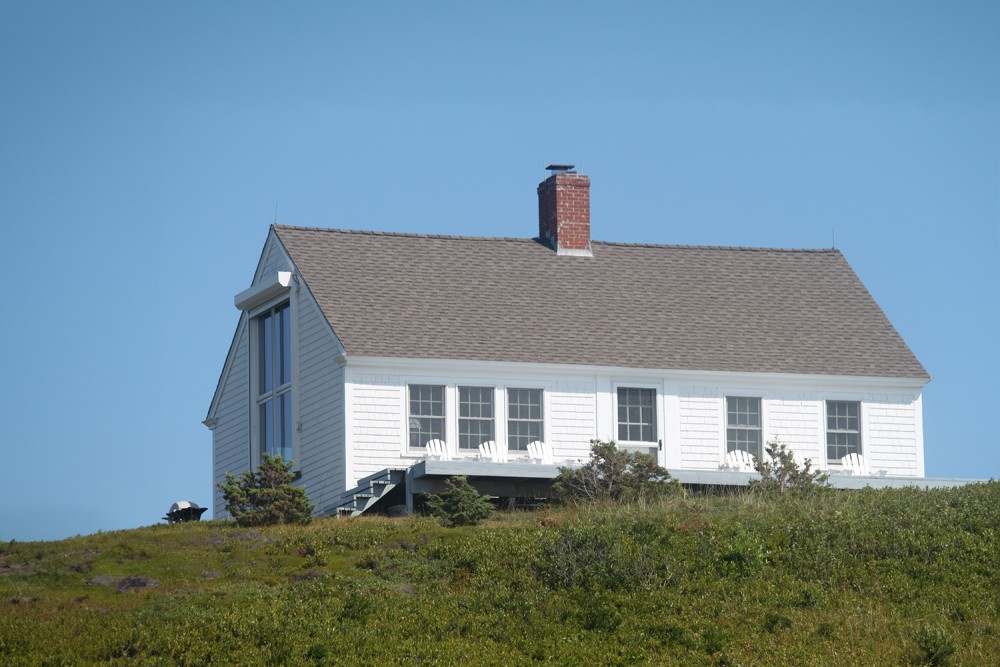A clear view
When our congregation designed our new sanctuary, we wanted windows that help us see our neighborhood’s needs.

Edward Hopper’s cottage in Truro, Massachusetts, on Cape Cod. (Photo by joseph a / Creative Commons)
A large Edward Hopper painting hangs above my writing desk at home. It’s not an original oil, mind you, but a beautifully framed reproduction nonetheless. Hopper’s use of shadow and light to create specific moods in austere cityscapes has long caught my eye. His careful placement of human subjects inside windows, often just a solitary figure, evokes themes of loneliness, melancholy, and boredom.
Curiously, the windows in Hopper’s paintings tend to be much larger than the people peering through them. Perhaps not coincidentally, his home studio on Cape Cod had a massive, ten-foot-tall window next to his easel from which he looked out on the world. When someone asked his wife, Josephine, what was the most difficult aspect of being married to a great artist, she replied, “It took me a long time to realize that when he is looking out the window, he is working.”
Read our latest issue or browse back issues.
What is it about the view through a window that can enlarge a viewer’s life, or in the case of Hopper, foster “his personal romance with the act of looking,” as a student of his put it? It could be that gazing out a window pulls a person beyond their circumscribed life, past their tired routines, and away from the predictability of yet another day.
When our congregation was in the design phase for a new sanctuary, our team pressed the architect to include plenty of clear glass. There was already some impressive stained glass to incorporate, but we wanted to be able to see the neighborhood of need that surrounds the church—our mission field. The final design netted an 80-foot-long wall of floor-to-ceiling glass. To turn and peer through this enormous window during worship constitutes its own kind of prayer. One realizes that the people walking down the street outside are the very ones we’re supposed to love and partner with to make a better world.
According to the Talmud, “a person should only pray in a house where there are windows” (BT Berakhot 34b). Halachic guidelines indicate that synagogue architecture should have windows in the sanctuary so that people can focus outwardly in prayer. The Talmud offers the example of Daniel as support for this prayer principle: “He had windows open toward Jerusalem in his upper room, and he got down on his knees three times a day to pray and give thanks to his God” (Dan. 6:10).
Just as prayer practices can lose their luster or grow stale, however, so can the view through a window cease to provoke the imagination. Depending on one’s circumstance or emotional state, it’s possible to tire of the vista outside any window. This viewing fatigue set in a few years ago for two advertising executives in Singapore. Sonali Ranjit and her husband, Vaishnav Balasubramaniam, concluded that if they were bored with the view out their main window, surely someone else in the world was bored with their view as well. They noted that they could swap videos far more easily than residences, and WindowSwap was born: a website that lets users check out videos of other people’s vistas from around the world.
Sonder is the noun that Ranjit and Balasubramaniam rely on to explain the refreshment that comes from observing other people’s very different life situations. The word is a 2012 neologism from the Dictionary of Obscure Sorrows: “The realization that each random passerby is living a life as vivid and complex as your own—populated with their own ambitions, friends, routines, worries, and inherited craziness.” Maybe sonder is what we need for our next window gaze, our next prayer, and—when the two of those come together—our next act of worship.






